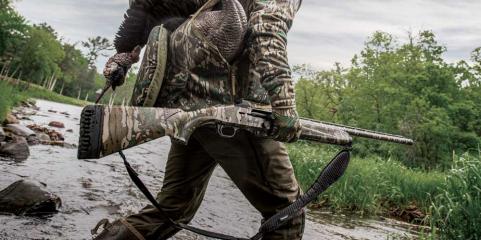Brent Birch
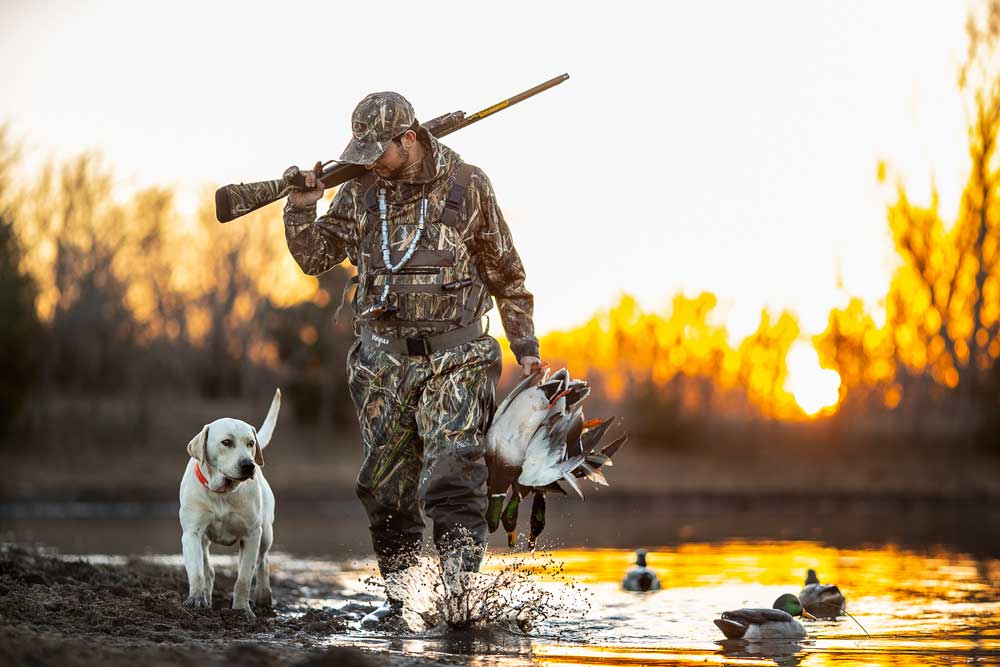
As this duck season winds down, many hunters are still out there grinding hoping for one more great day afield. As most hunters know and experience, late January mallards can be very difficult to lure in shotgun range. Given they have been called, decoyed and shot at since September across two countries and thousands of hunters, the ducks still around are wise to all of our standard strategies.
To have late season success, most waterfowlers need to take a step back from what has worked (or hasn’t worked) all season and adjust. Showing up at the same old hole, throwing out the same set of decoys and calling until you run out of air typically does not work once mid-January hits. The ducks have literally seen and heard it all.
There have been countless articles written on the topic of late season duck hunting success, but here are a few insider tips and tricks that may work when ducks are in the area. None of these are automatics just like any other hunting strategy, but they are based on years of observing and recording duck behaviors and hunting success (or lack thereof).
In the Timber
By now, many of the mallards have pushed past the courtship flights to pair bonding. Once this happens, the ducks will typically head to the shorter, thicker timber and buckbrush to be isolated. Think of it like they’ve all been at a massive tailgate party all winter and now it’s time to leave the party with your date for some one-on-one time. Mallards do not make the magic happen in the mid-latitude and southern states but do start spending time getting to know one another before heading north.
Sidenote: This pair bonding is a significant factor in why we can’t hunt ducks past January 31. Busting up those breeding pairs past that date has serious implications in the next year’s hatch success. So for those that advocate for hunting to last into February because that is when all the ducks are here…forget about it.
If you are out truly scouting (not just roaming the woods in your boat disturbing loafing ducks, which is all too common these days), try to find those short, thick trees off the beaten path. Mallards will rarely work big open holes in the canopy in late January due to being shot at every time they do. The thicker the cover and shallower the water the better.
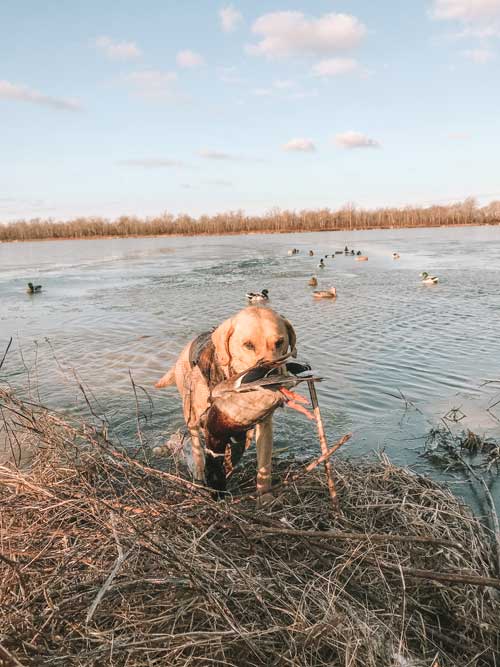
Calling…or not
Come late January, calling at ducks may do more harm than good. Especially with stale ducks that have been around. Their patterns are going to be pretty set in stone unless a major weather event pushes them to do something different. Be where they want to go and be quiet versus trying your damnedest to blow them out of the county with hail calls and constant calling.
Trolling for ducks, especially in the woods, can be very productive but once they are within working range, and considering your spread, either put that thing in your pocket or use very subtle quacks and feed calls. I’m not talking Main Street Stuttgart rolling feed calls that you see on YouTube. More like short, stop and go, low volume action chuckles. Big rafts of ducks are rare at this time of year; there’s no reason to try and sound like that. The ducks that made it this far in the season aren’t stupid and typically won’t fall for 3-5 dudes blaring calls at them like they did in November.
Less is more may never be more applicable.
Hunt the Hide
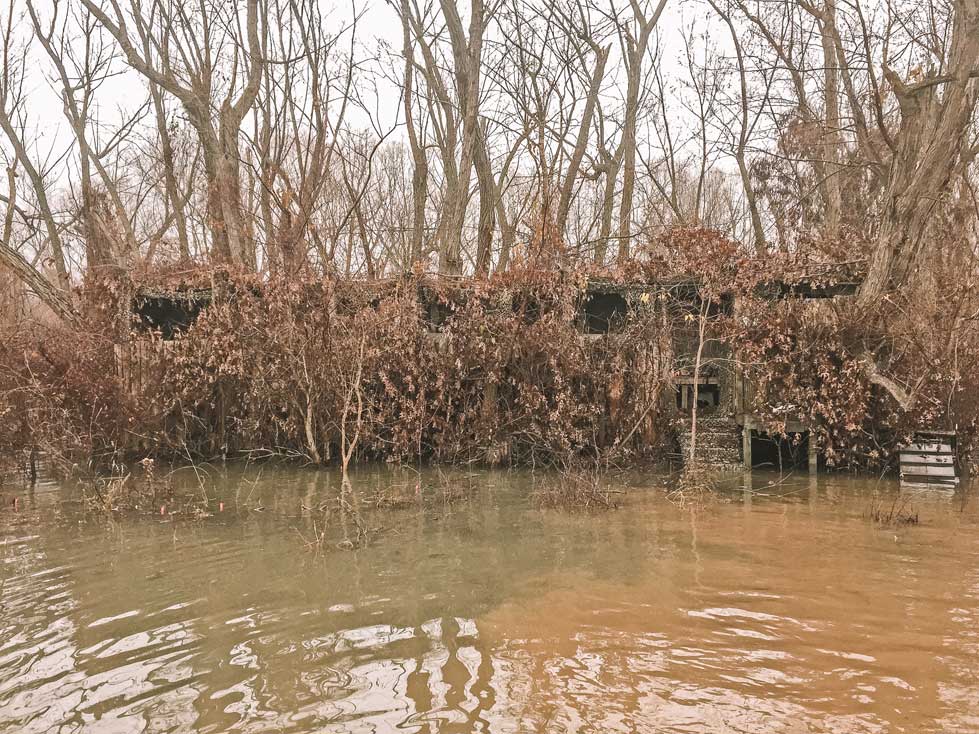
After a few months of weather, hunters getting in and out of the blind, and so on, odds are your favorite duck blind has lost a lot of its camo. Hunters break branches or push cover out of the way so they can see and shoot better, (Keep in mind, the ducks can now see you better too.) or they’ve worn down all the cover around a pit blind getting in and out all season.
Freshening up your hide for the stretch run could be the difference between a good day and a bad day if you have ducks in the area. The ducks are already skittish this time of year due to being hunted for 4-5 months, so the ability to disappear into the landscape is crucial.
If there is no cover left to spruce up your blind, quit hunting it and move to a nearby location like a tree line or well-covered levee. This is not always possible but if the ducks can easily pick out your normal location/blind, hunting could get real tough this late in the year. Hiding from savvy ducks is never more important than the late season, even if that means sacrificing the comforts of your normal spot.
Next season, maybe set some guidelines with your fellow hunters on getting in and out of blinds and not busting up the good cover so your blind will be effectively huntable next year late in the season. Like getting in and out of the pit blind on one path versus trampling down all the cover around it. These efforts could really pay off at the end of future seasons.
Be Flexible
This is probably the number one key to getting on some late season mallards. If your place does not have the ducks, network and/or scout to find where they are. If you expect to show up at your same pit blind or timber hole and hope the ducks magically appear, the season may end up in a disappointment. Especially a spot that has been heavily hunted/pressured all season.
Try some less pressured spots that you have not hunted as much, especially if that spot has some traffic. Ducks are looking for getaway spots this time of year. Less boat traffic, less UTV/ATV traffic, less shotgun noise, etc.
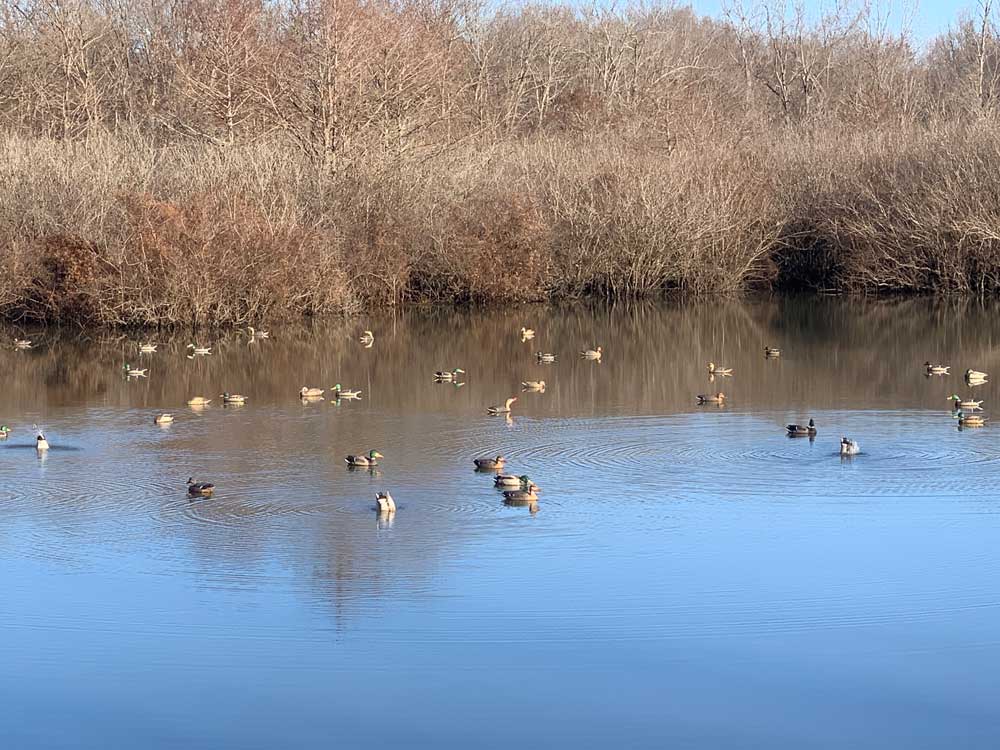
Another point of flexibility would be decoys. As stated earlier, ducks are not really rafting up in late January unless conditions require like frozen shallow water or snow cover. A big reason hunters see huge wads of ducks all together in February is because most landowners have let their water go to prep for spring planting season so the ducks bunch up on whatever remaining water there is. There are not more ducks around in February; there is typically less water. These conditions - or they are prepping for a jump north are - about the only way you see ducks gathered in big groups in late January.
Your decoy spread needs to mimic what the ducks are doing. A pair here, a pair there, maybe six drakes to one hen here. The more natural your spread looks, the better odds you have of luring some late season ducks into range. The days of setting out 18 drakes and 18 hens in a traditional arrangement are over come late January. The ducks have seen it a bazillion times up and down the flyway and that is not how they are grouped up this time of year.
Also, on brutal cold mornings, sleep in a little longer and be prepared to hunt a little later in the morning. Ducks tend to sit at first light after burning a lot of calories up staying warm all night. They often let the sun get up a little to warm the day before venturing out to feed their appetite. Definitely think about this if you hunt big water that will remain open in low temps. Ducks will go out searching for food and return late morning to bask in the big bright sunshine before fighting the cold for another night. Of course, the more desperate ducks get for food and warmth, the more unpredictable they can be. They may feed multiple times a day or wait until an afternoon warmup to move. All bets are off after several days of super cold temperatures, at least until you can pattern them.
Observe and adjust is the name of the game.
Be Tough, Be Thankful
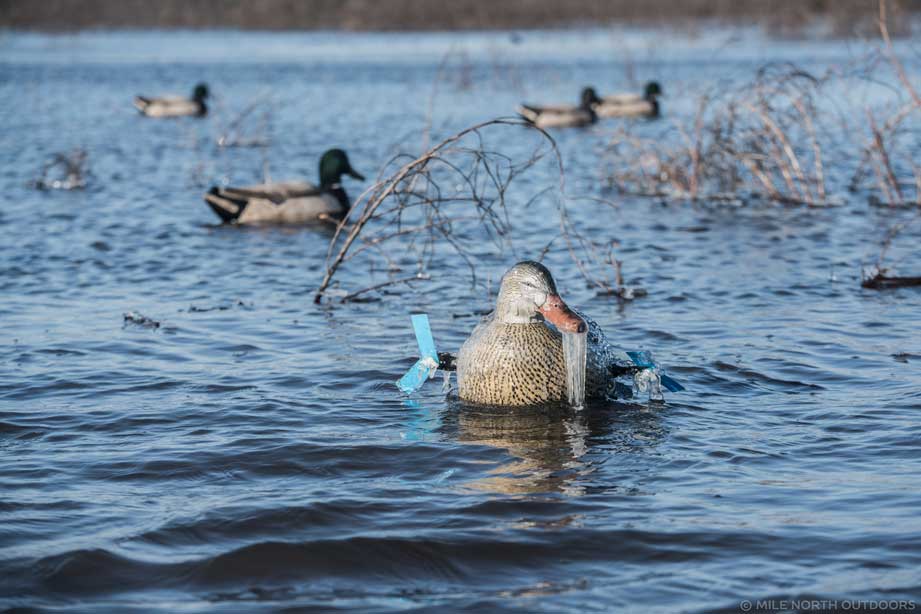
Late season duck hunting can be tough on the body and your equipment. To have some successful hunts late in the year, a waterfowler has to be prepared to battle the elements. Boat motors that will not start, UTVs that lock up, guns that fail to function, duck calls frozen…all of these things come into play. Be prepared by taking care of your gear, wearing the right clothes and staying dry.
Of course, we have had seasons end with 70-degree temperatures too. Those just make a duck hunter want to throw in the towel. If I am watching for snakes and swatting mosquitoes the last week of January…consider the season over before it’s over. It has happened before and will again.
Most of all, be thankful you fell in love with this sport and enjoy the last few remaining days of the season. Keep in mind we don’t get to do this again for 9-10 months. Savor what is left of the season, even if the hunting is poor. Enjoy good friends gathered at your duck camp or the beautiful sunrises that come this time of year. It’s OK for a strap full of ducks to come second or even third come late January. Lower the expectations and soak in the last remaining days for all the good stuff that comes along with duck season.
After a long, grueling winter chasing waterfowl, your sanity level will be in much better shape if you have that mindset.















